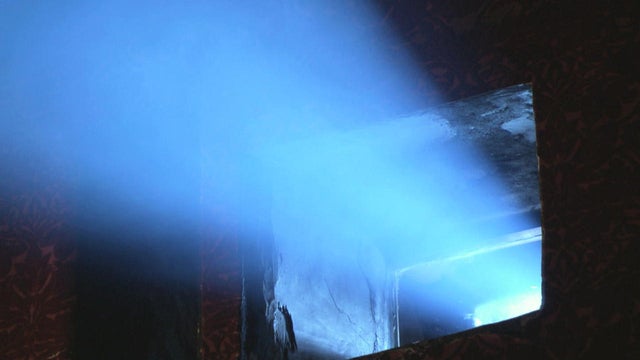The history of the blockbuster movie

Directed by Steven Spielberg, then just 26 years old, "Jaws" surfaced in the summer of 1975. John Williams' theme (the most famous two notes in Hollywood history), and those teeth, scared families out of the water and into movie theaters, becoming the blueprint for the modern blockbuster.
"I was a kid when 'Jaws' came out," said Slate film critic Dana Stevens. "But I remember that in prime time every night there would be, you know, these scary trailers for 'Jaws' on TV. And so, by the time it opened in the summer of '75, people were hyped."
Turner Classic Movies host Ben Mankiewicz said, "It was a blockbuster about summer, set in summer, about things that we totally associate with summer."
Thirty-five years after "Jaws," "Avatar" redefined the blockbuster. So far, James Cameron's 3-D science fiction film has earned $3 billion at the box office. It's Hollywood's biggest moneymaker ever.
A prolific character actor, Stephen Lang played villain Miles Quaritch in "Avatar." "It widened the array of choices that I had," he said. "Look, one time they asked Robert Mitchum and they said, 'How do you choose your roles?' And he said, 'Well, I read what's offered and accept the least embarrassing.'"
The formula established by "Jaws," then exceeded by "Avatar," is in theaters this summer: the seventh "Mission: Impossible," "Indiana Jones and the Dial of Destiny," "Oppenheimer" – they all fit the definition of a big-budget, mass-marketed movie designed to make big money, at the box office and beyond.
"The truth is, the blockbuster is a concept, an idea, a strategy that Hollywood has been using for quite a few decades before 1975, when 'Jaws' was released," said Charles Acland, who chronicles this cinematic business model in his book, "American Blockbuster."
The term's origin story is no Hollywood tale; it came from the American military, the name of a devastating World War II bomb. Acland said, "The blockbuster was initially the highest-capacity explosive that had ever been used in warfare. There was very, very high public awareness of what this was."
Movie studios re-purposed the word in the late 1940s and '50s, first as a way to sell films to theaters, and later, to lure audiences back from TV by promoting grand epics, often on a Biblical scale.
In 1959, The New York Times used the word "blockbuster" in its review of "Ben-Hur." Of course, not all these epics succeed. There's 1963's "Cleopatra" (directed by Ben's great-uncle, Joseph L. Mankiewicz).
Twelve years later, "Jaws" re-wrote the rules.
For every big-budget blockbuster, there are nearly as big-budget bombs: "Battlefield Earth," "John Carter," "The Lone Ranger," "The Adventures of Pluto Nash," and, famously, "Ishtar." Stevens said, "I have great affection for 'Ishtar' now, in part because of how poorly received it was at the time, and how quickly it became just a joke."
Meanwhile, far less expensive sleepers hit the jackpot. "Dirty Dancing," released in the summer of 1987, cost roughly $6 million to produce, and returned more than $200 million. Stevens said, "This falls really into that niche about the women's movie, a movie that focuses on a female character and her world, that isn't sci-fi/adventure, doesn't have any violence in it, and has massive, massive appeal."
Premiering next week, "Barbie," directed by Greta Gerwig, similarly focuses on a female character.
Charles Acland believes the movie will sell much more than tickets: "What we are talking about here are these really gigantic investment opportunities – in the case of Mattel, reintroducing Barbie as a particular item of relevance to many different audiences."
For Stephen Lang, the key to turning big-budget film into a blockbuster comes down to a single word: story. "I think as a rule, it's good to have a very simple narrative," he said. "Take 'E.T.' I would characterize 'E.T.' as a blockbuster, although, you know, it doesn't have the huge, huge scale. But what it does have, it's got the cutest alien ever created, and the storyline's pretty simple: I'm here, I'm stuck, and I wanna go home."
The fact is, what matters to movie lovers isn't the take at the box office, but what we take away from the film. Lang said, "You just don't want to leach the art out of Hollywood. Think of the films that have come out of there, you know? They've been extraordinary. And they can't be just replaced by comic book characters and just huge stunt films from end to end."
Dana Stevens said, "Anybody who goes to the movies wants to either laugh or cry, to experience intense emotions."
"People want to see something move, and they want to be moved," said Mankiewicz.
"Right, moved in both senses – moving on screen, and moving something inside you."
For more info:
Story produced by Gabriel Falcon. Editor: Lauren Barnello.
See also:
source: https://www.cbsnews.com/news/the-history-of-the-blockbuster-movie/